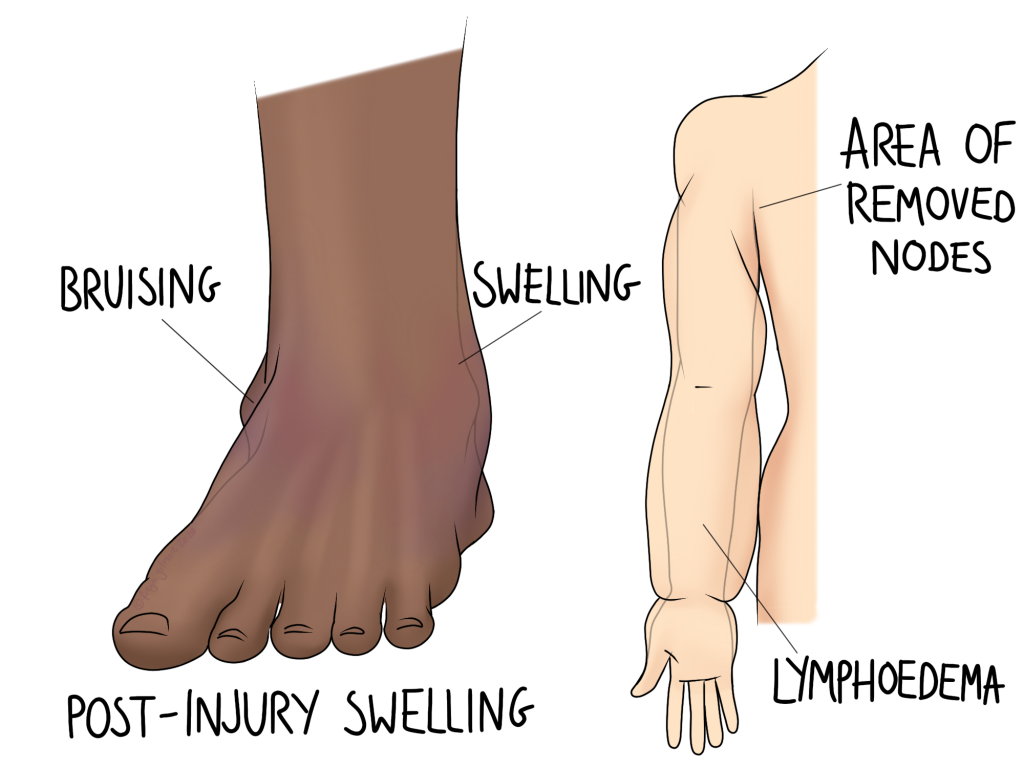Circulation is a bit of a vague term, but it is considered an area that osteopaths may be able to help with. This post will focus on two specific aspects of circulation.

Post Injury Swelling
The more simple of the two is post-injury swelling. This may appear alongside bruising for injuries such as ligament sprains. Although your first reaction might be to try and reduce the swelling as much as possible, this is no longer recommended, because the swelling serves a purpose.
When fluid builds up around an injury, it is full of white blood cells and nutrients needed for repair. The white blood cells help to fight infection and clear dead tissue, so we definitely want them present. A problem arises if the fluid sits there for too long without refreshing. It needs to return to circulation to take away the dead tissue and waste products, leaving space for new fresh fluid.
A cool compress can help to take the edge off a post-injury swelling, but this should be limited to no more than 10 minutes per hour. The cold constricts local blood vessels, acting as a bit of a pump to drain the excess. It can also provide some pain relief. The body has other pumping mechanisms too: muscles. Gentle (off weight-bearing if needed) movement through the local joints can encourage the swelling to circulate. Further down the line, movement is also crucial to good healing. After a sprain, instability can persist for a long time if not properly rehabilitated. Fortunately, responses can still be good even years after the original injury. See below for booking information if this applies to you.
Lymphoedema
Lymph nodes are found all over the body: you may be familiar with the “glands” in your neck raising during a cold or throat infection. They are part of a bigger system, assisting the immune system and vascular system.
Lymphoedema is swelling due to a back up of lymphatic fluid. This is often caused by the removal of lymph nodes, which can be a part of cancer treatments. Lymph nodes in the arm pit may be affected by breast cancer, so removing them reduces the risk of metastatic spread. However, as this makes the lymph harder to clear, it can cause the fluid to build up in the arm.
After lymph node removal, the hospital might give you compression garments, exercises, and physiotherapy to help to manage the swelling. A combination of the above might be the best approach for you. Osteopaths can help with lymphatic drainage, using gentle massage techniques to push the fluid back towards circulation. We can also work further into the body, with the aim of creating negative pressure to act as a pull for the fluid to return.
Lymphoedema is a long term problem, and we expect the swelling to return relatively quickly after treatment. However, if you find that a helping hand makes it easier for you to manage in the interim with your exercises and compression garments, we will always be happy to help.
Contact Rachel on 077 7593 1609 to make an appointment for your circulation.


